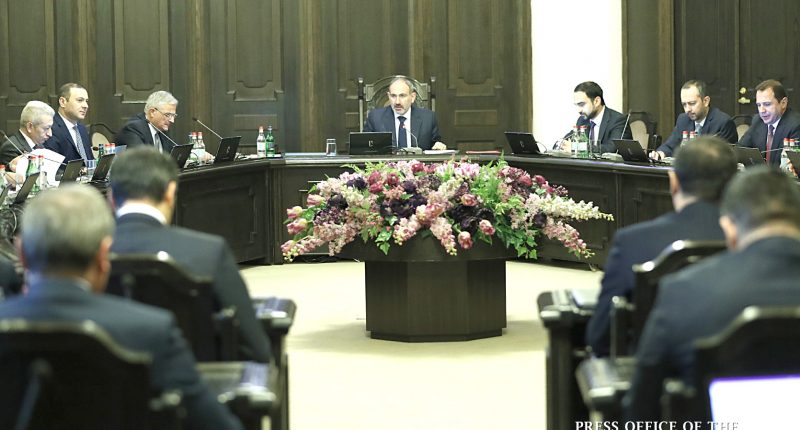YEREVAN — Armenia’s GDP has grown 7.6% in 2019, Armenian Prime Minister Nikol Pashinyan said Thursday at a cabinet regular meeting, referring to the National Statistical Committee’s latest report. “The indicator is not bad,” he said. “We can place on record the following: in 2019 we have recorded the largest economic growth since 2008, with which I congratulate all of us,” he said at the government meeting. Pashinyan expressed confidence that indicators will be higher in 2020 thanks to joint efforts.
Official figures publicized by the Statistical Committee show that trade and other services were the main drivers of this growth which increased the country’s Gross Domestic Product to 6.55 trillion drams ($13.6 billion).
A 9 percent rise in industrial output reported by the government agency also contributed to it. By contrast, the Armenian agricultural sector contracted by more than 4 percent in 2019.
After years of sluggish growth that followed the 2008-2009 global financial crisis, the Armenian economy expanded by 7.5 percent in real terms in 2017. Its growth slowed to 5.2 percent in 2018, which saw a dramatic regime change in the country, but gained renewed momentum in 2019, leading the International Monetary Fund to revise upwards its growth forecast for Armenia.
“For this year we project growth to be at around 6.5-7 percent,” the IMF’s resident representative in Yerevan, Yulia Ustyugova, told RFE/RL’s Armenian service in November.
Ustyugova cautioned that Armenian growth is largely driven by private consumption, rather than rising investments or exports. “The challenge remains how to generate sustainable, long-term growth that is driven by investment and exports, rather than consumption,” she said.
For its part, the World Bank estimated Armenia’s 2019 growth at 6.9 percent in its latest Global Economic Prospects report released in January. The bank said the Armenian economy will grow by 5.1 percent this year and slightly faster in 2021 and 2022.
In early 2018, the World Bank upgraded Armenia’s status from a “lower middle income” to an “upper middle income” nation. The official poverty rate in the country fell from 29.4 percent in 2016 to 23.5 percent in 2018.
According to IMF projections, Armenia’s GDP per capita is on course to reach $4,760 and exceed neighboring Azerbaijan’s and Georgia’s in 2020.










